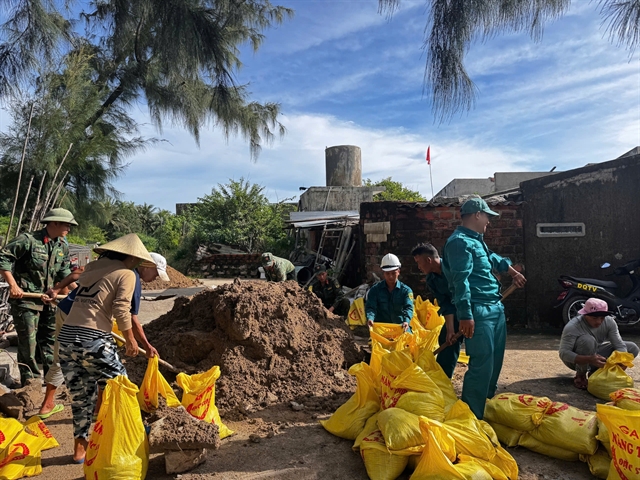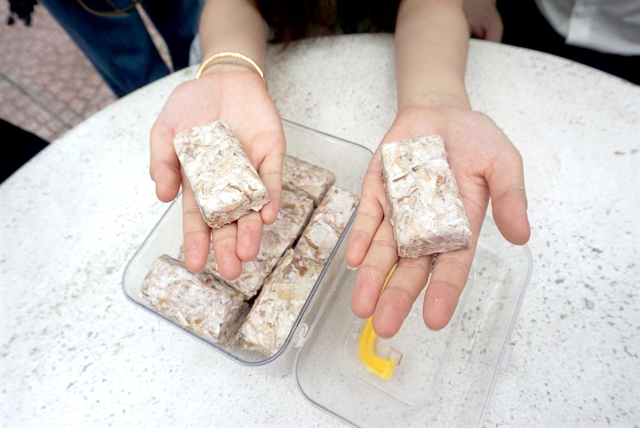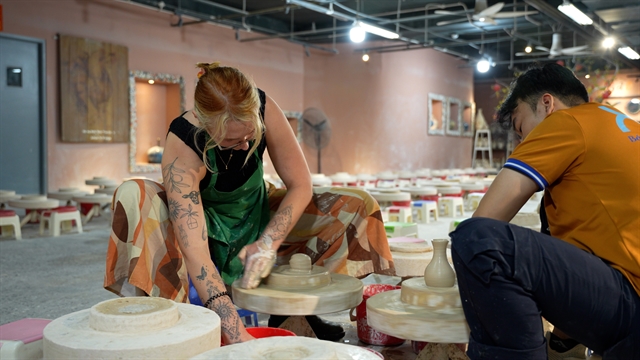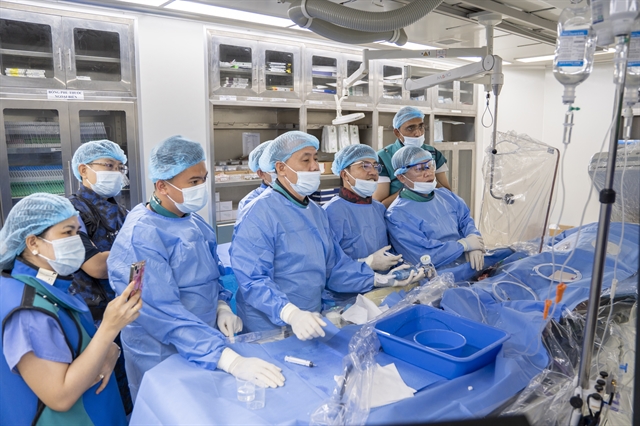 Society
Society

 |
| Students from various universities in HCM City together launch the NIION project that makes biomass pellets from garlic peels. — VNA/VNS Photo Thu Hoài |
HCM CITY — With a desire to make use of garlic peels discarded during agricultural processing, a group of students from various universities in HCM City came together to launch the NIION project that makes biomass pellets from garlic peels.
This project will compete in the final round of the National Startup Ideas Contest for students, organised by the Ministry of Education and Training in April this year.
Sharing the inspiration behind the idea, Đinh Văn Nam, the group’s leader and a student of the HCM City University of Food Industry (HUFI), said his family's agricultural processing workshop generates about one tonne of garlic peels per day.
These peels cannot be buried due to their natural antibiotic content, which reacts negatively with heavy metals in the soil, potentially harming the environment.
His family spends approximately VNĐ30 million (US$1,675) each month on disposal.
For years, Nam had been concerned about reducing these costs and finding a way to reuse the waste.
Following Typhoon which hit northern Việt Nam last September, when dengue fever outbreaks surged in some areas, Nam began to consider using garlic peels as a natural mosquito repellent.
Garlic peels contain allicin - a compound known to repel insects without harming humans or the environment.
Further research revealed that garlic peels have a paper-like structure, albeit rougher, and when burned, they emit minimal CO2.
“This led to my idea of turning garlic peels into a fuel source - addressing waste disposal, reducing environmental pollution, and creating economically valuable products,” he said.
As a student majoring in financial technology with limited chemistry knowledge, he reached out to fellow students in his own and other universities with expertise in chemistry and engineering to bring the idea to life.
The project received technical and laboratory support from HUFI, the HCM City University of Technology under Việt Nam National University-HCM City, and the Institute of Innovation Incubator of the University of Economics HCM City.
Regarding the production process, Nam said the garlic peels are first cleaned and dried, then compressed and bonded using soy wax, with essential oils added for scent depending on the product line.
In the early stages, the group members struggled to find a substance that could both bind the peels and be flammable.
After numerous trials, they succeeded using soy wax or beeswax. Soy wax was ultimately chosen for its lower melting point (70-80°C), which does not degrade the garlic peels, and its lower cost compared to beeswax.
The group plans to release three product lines: barbecue charcoal, biomass fuel pellets, and a third type infused with essential oils to repel insects.
Prototypes of these products are already available, and market testing is scheduled to further refine them.
 |
| Students are working to perfect their biomass pellets made from garlic peels. — VNA/VNS Photo Thu Hoài |
Hoàng Thị Thoa, director of the Innovation and Startup Center at the University of Food Industry and the NIION project’s mentor, said that while biomass pellets and fire starters from agricultural waste exist globally, this is the first known product made from garlic peels.
“The initiative contributes to solving the challenge of green energy, reducing emissions and carbon output, minimising environmental pollution, and adding value to agricultural byproducts,” she said.
However, the product still needs technical refinement before it can be fully commercialised, she said.
The students are also working on improving the formula to reduce the amount of soy wax, lower costs and enhance the product’s appearance.
Depending on size and weight, each pellet type has a different burn duration. After use, the ash can be repurposed as organic fertiliser to support sustainable farming.
“The group’s goal is not just to participate in competitions but to commercialise the product,” Nam said.
They are also exploring the development of garlic peel-based bio-batteries. — VNS




